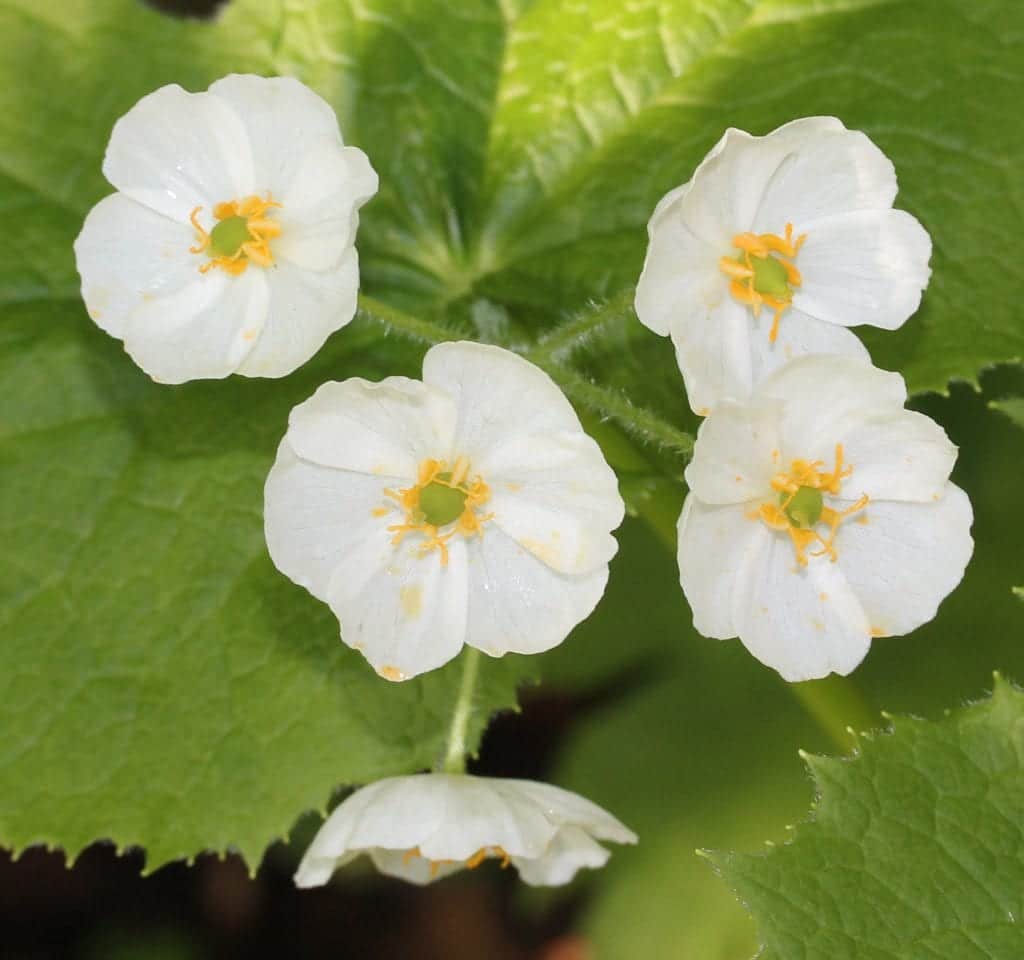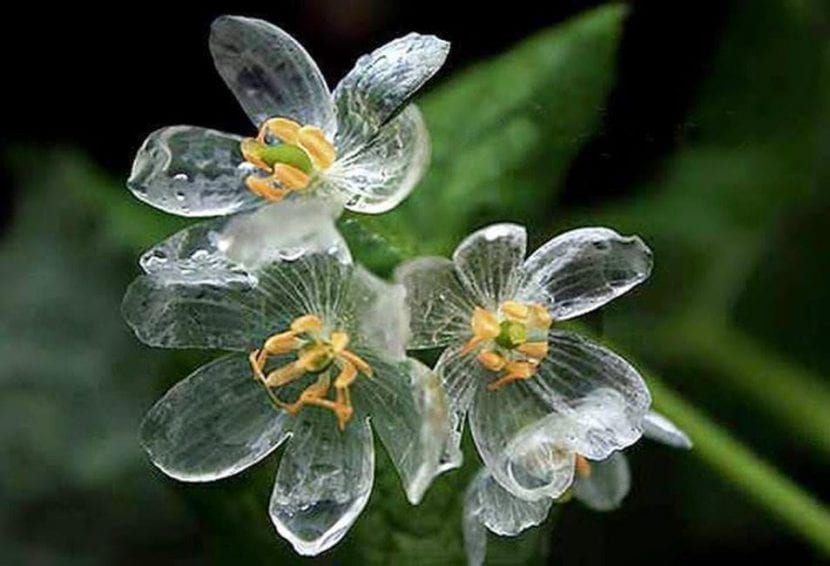
Few plants surprise us more than the ones that we are going to introduce you to on this occasion. Its scientific name is Diphylleia grayi, although that name probably doesn't tell you anything. However, if I tell you that the flower looks as if it is made of glass when it rains, you may not believe me, but the truth is that this is precisely what happens to it.
In fact, they call it »Crystal flower»Or»Skeleton flower»Because you can see all the nerves that are in the petals.
Diphylleia grayi characteristics

Very little is known about this species, but what we can tell you for sure is that it grows in the forests and slopes of the eastern United States and in the cold regions of Japan and China. It is a small perennial plant that does not exceed 25cm in height, hermaphrodite.
The flowers bloom in spring and summer. They are small, 2cm in diameter. When it rains, the water turns them transparent, but when they dry they return to their original color, which is surprising. The fruit is a blue berry that measures 1cm in diameter.
How do you take care of yourself?

Image - environment.org
If you do get a seedling, here is its care guide:
- Location: place your specimen in semi-shade, without direct sunlight.
- Substratum: the substrate to be used must have good drainage (here you have more information on this topic) and be slightly acidic, with a pH between 5 and 6. You can use substrate for acidophilic plants mixed with perlite in equal parts.
- Irrigation: frequent, especially in summer. Avoid letting the substrate dry before watering, but also waterlogging. For this reason, it is highly advisable to check the humidity before each watering, for example inserting a thin wooden stick. If the extraction comes out more or less clean, then we can water using lime-free water or, failing that, mixed with the liquid of half a lemon.
- Subscriber: highly recommended to fertilize in spring and summer with a specific fertilizer for acidophilic plants, following the indications specified on the product packaging.
- Transplant: every two years, in spring.
- Rusticity: it is an ideal plant to grow in temperate-cold climates, the maximum recommended temperature being 30ºC and the minimum -7ºC.
Have you heard of the crystal flower?